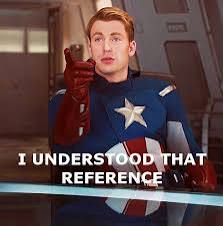Here’s my contribution to the ‘what the fuck are these things’ guesses:
Its a customizable, weighted D12.
You stick the coins into the slots, then do some kind of gambling involving dice rolls.
Part of the game is that as coins are added or removed, the weighting changes.
Hell, it could be that you take turns tossing the thing till its full of coins, thrower has to fill the hollow upward facing hole, as a way of anteing up, then just toss it again untill its empty, thrower takes out the upward facing coin, everyone takes a drink when it lands with a hollow slot face up.
The educated, literate people probably wouldn’t bother to write down the exact details of a low class gambling game, when literacy is rare and scrolls/books are expensive.
The things have reportedly often been found in cabinets and drawers alongside coins.
They vary in size… maybe some of the rather large ones could be commissioned as not a practical gambling die, but as an exxageratedly large one, as a trophy or ornament, like modern mall ninja swords or funko pops or something.
Possibly they could also serve a practical purpose for normal people and coin minters to check that their coins are properly sized.
Any… Roman numismatists here that can sanity check this, in terms of coin sizes?
The educated, literate people probably wouldn’t bother to write down the exact details of a low class gambling game, when literacy is rare and scrolls/books are expensive.
Interesting enough, the Roman Emperor Claudius, who was an enthusiastic dicer, wrote a book on gaming/gambling. It’s been lost to time, unfortunately.
Literacy is a funny question in regards to the Roman Empire, as is the price of scrolls/books. There’s limited evidence that scrolls and books were actually cheaper in the Roman Empire than in the 15th century AD, just before and in-the-early-days-of moveable type, and that urban literacy was fairly widespread. The big problem is that the vast majority of ancient writing simply has not survived the ages.
I’m not well-informed about the dodecahedrons or the theories surrounding them, but I’m inclined to find your explanation, while interesting, probably a bit too complex. Especially considering that coins were often slightly irregular in shape, as the mass-produced neat, perfect circles that we’re used to are a result of modern milled coinage
Ah well, worth a shot.
Must be ceremonial.
So it’s a sex toy, got it.
A fertility ceremonial, got it!
Did it went up or got filled?
I always loved David Macauley take on this. He wrote a book as if people 2000 years ago found a motel and he presumed the “sanitized for your protection” banding and toilet seats would have been seen as ceremonial wear.
https://www.byanyothernerd.com/2020/04/stranger-days-39-mysteries-of-motel.html?m=1
I can’t remember if it’s an official Asimov book or not, but one of the Foundation books set far beyond even the main series has an archaeological mission finding thousands of ceremonial hard white ceramic bowl-funnels and speculating on their significance to these incomprehensibly ancient peoples.
thousands
There’s probably millions even if you account for the fact that most would have been destroyed
Ehh idk about this take. I agree with the article that there are some commercial historical mediums like the History Channel that interpret the past in an absurd/almost malicious way. However modern archaeology does a really good job of finding out how objects from the past were used and how people interacted with their environment. A toilet is not really gonna be up for debate as for what its use was. Historical text, fecal remains, toilets looking pretty similar for the past thousand years, is gonna tell you it’s a toilet.
The notion of our interpretation of the past being completely flawed is kinda true if it was like the 1950s and we were talking about non-western cultures from a western perspective.
Again this is a children’s book.
ion know why you saying “again” like you made a big point of it being a children’s book (you didn’t). I’m just saying I don’t like media like this. It feels like they’re delegitimizing research that is already brushed off by society as not useful compared to something in a stem field.
We can have different opinions lol
It’s fiction? I think you need to take a second to actually read the link provided because it’s very clear this is for children and your response to it is silly.
Broski no need to get so pressed. What do you think fiction is? How would a young, impressionable audience, interpret this work?
Works of fiction don’t exist in a vacuum. They are directly inspired and informed from the world we live in. In a similar vain, the impact of fiction does not exist in a vacuum. You don’t read a book and come away with no thoughts related to it. You don’t just throw away knowledge like that. If anything fiction works directed at children have an outsized impact on how we perceive the world compared to the space they occupy in literature.
Im not your bro. You literally are complaining about a fiction book that most people read at the age of nine to twelve. It’s not having the impact that you think it does. You are worrying about nothing likely because you don’t have kids.
I read a book at the same age that suggested we could live on Mars and there was a whole culture on the planet yet I don’t believe that either. Is that because at 9 I understood what fiction is?
I remember reading a book as a kid, I can’t remember if it was this or maybe inspired by this, but adapted for kids (iirc the art style was more cartoony and comedic) where archeologists unearth a motel called the Toot and C’mon.
Edit: after a bit of searching I think it was this book. Unlocked some memories I didn’t realize I had.
This guy did a bunch of kids books. My favorites were Castle and Pyramid.
What if instead toilet seats become a symbol for a group of genetically engineered super soldiers known for being Mary Sues?
Underrated joke
Archeologists after looking at literally anything: Looks like a calendar. Or maybe a religious object. Or maybe a calendar of religions significance.
People back then loved their religious calendars. That’s all they ever talked about. Whole books could be written about them.
But instead of books to write about them, they documented their love of religious calendar artifacts, with more calendar artifacts.
or something used in “fertility rituals”
Translation: it’s clearly a dildo, but if i put that into the study they won’t publish it.
I thought for sure it would be this video
A NEW HAND TOUCHES THE BEACON
Nope.
It’s a Roman plumbus.
I always wondered how they made those
with lead probably
Everyone Roman has one
This is why there was no need to write about it.
They’ve actually all been planted by time travelers just to fuck with people.
This is why I couldn’t have a time machine. I’d go back in time and fuck with people. Leave a modern day Bic pen deep in a cave in New Zealand, or a randomly shaped object with no clear use made from something like titanium in a forest in the middle of Brazil.
Knitting
People say this every time, and it’s still not true, because the Romans didn’t knit. Knitting is a technology and it hadn’t made it to Rome at the time these were made.
Also, some were solid and unsuitable for knitting. And they were found with giant piles of money, which is a weird place to keep your domestic tools.
Knitting
Oh well if you put it that way I guess it’s knitting
Good

Knitting metal: https://youtu.be/lADTLozKm0I
Also gloves: https://www.youtube.com/watch?v=76AvV601yJ0

knitting what? the ones that have been recovered were way too big to make sense for that purpose
Maybe oversized sweaters were a thing back then
Gotta keep the giants and dragons warm
God-sized sweaters and socks to offer at the sermons in temples
And they don’t show signs of wear and tear that using them for such a purpose would create, either.
My crochet hooks don’t show a lot of wear either.
Gloves. There’s several YouTube videos of people knitting gloves with them. If you use 5 holes, you’ll end up with a slight curve to one side for free. You can use the hole-sizes as a guide for finger width. Most of the work is done by the nubs sticking out, which hold the outermost stitch.
Romans quite literally did not knit.
YouTube grandma was using it as a French/spool knitter. You can do this with four nails in a board if you are really inclined. The problem is that the peg distance determines the size of the tube - not the holes. All faces would make the same size tube, which is just adding pointless bits to make it unpleasant to use (and more expensive/difficult to manufacture.)
Knitting metal: https://youtu.be/lADTLozKm0I
Socks rarely last a year, fabrics existed in Rome, it’s like not knowing if 2 + 2 equals 2 because there aren’t any historical examples of people putting two and two together until the xth century AD.
The reason that knitting isn’t the currently accepted answer, is that its pretty well understood that in the periods where these are found, Romans quite literally did not knit. Also, Romans documented, like, everything.
First of all, Wikipedia is not a source. All of the sources on Wikipedia are annotated in the text and listed at the bottom of the page. All you have to do is look down, get the actual source, and use that. You couldn’t be bothered to do the bare minimum to give an argument but still waste time throwing out links to non-sources?
Secondly, from your “source”:
These complexities suggest that knitting is even older than the archeological record can prove.[3]
Earlier pieces having a knitted or crocheted appearance have been shown to be made with other techniques, such as Nålebinding, a technique of making fabric by creating multiple loops with a single needle and thread, much like sewing.[4] Some artefacts have a structure so similar to knitting, for example, 3rd-5th century CE Romano-Egyptian toe-socks, that it is thought the “Coptic stitch” of nalbinding is the forerunner to knitting.
What Wikipedia is pointing out is that archeologists for many years did not understand how to distinguish Coptic stitch from knitting. They look very visually similar, but have different physical properties. This did lead to confusion among archeologists - I’ve also seen the fact that other languages don’t distinguish two needle knitting (“true” knitting) from needlebinding techniques (some don’t even seem to have a separate word for crochet, argh…)
I’ve stumbled on some arguments for 8th century examples - but even if we are pushing back the origin date for knitting that far, that still doesn’t put us in Rome (unless we’re counting Byzantium lol). It also does not at all justify the dodecahedron.
Will you be happier if I say the Dodecahedron was likely used for, among other things, setting together strings for fabric in the shape of gloves and mittens? Since the word “knitting” is apparently far too complicated and nuanced for this discussion…
There is no evidence of that, and it does not align with the known techniques that Romans used for textile production. It would make zero sense as a tool for weaving, sprang or needlebinding.
I also have strong doubts for finger gloves being anything other than extraordinarily rare. Cmon, Roman clothes are mostly just draping yourself with big ass rectangles.
Like, there’s just nothing there. YouTube grandma did something cute - I’ve been blackout drunk at the science museum knitting shit with pencils - that’s not evidence that pencils are knitting tools. It doesn’t make sense as a textile art tool. The closest might be as a cordage/rope making tool - maaaaybe all of those extra knobs add some kind of tension - but that just doesn’t seem likely either.
It really comes down to - what is your evidence? Why do you think it was a textile art tool for creating mittens?
If you think the idea of “knitting” is itself too complicated to understand - why are you making arguments about textile history? What knowledge or interest do you have of textile history?
Knitting is a medieval development that originated around Egypt in probably 1000-1100 CE (AD). There is no evidence of two needle knitting before then.
Romans used sprang, weaving and needlebinding techniques. They did not knit. Some needlebound artifacts can resemble knitting - particularly those in the Coptic stitch. They are still produced using the thumb and needle method of needlebinding and are structurally different.
The type of knitting that YouTube grandma did on the dodecahedron - spool knitting/French knitting - is an even later development - early modern period - 1400-1500s.
As a spool knitter, the dodecahedron makes very little sense. The spacing of the pegs - not the spacing of the holes - is what determines the size of the created tube. Every face of the dodecahedron would create the same size tube - which means you’ve just got extra random pointless shit digging into your hands. Google and compare to a modern spool knitter.
The idea of making a doohickey for fingered gloves, which you would then need to sew on anyway (every knitters least favorite thing to do) - it’s silly.
Here are some 4th/5th century socks - produced via needlebinding.
Here is the earliest known example of true knitting. 1000 at earliest.
You mentioned that not all socks would survive - that is true, but often textile patterns can be recovered through indentions in other material.
Always love seeing these come up and everyone confidently stating that it’s been solved. Everything from a knitting tool (highly unlikely as the Romans didn’t knit) to a dice. The truth is we just don’t know and likely never will unless a new source .
Personally I’m convinced by the theory that they’re probably a metalworkers portfolio piece used to demonstrate the creators skill, either to potential customers or as a test to join a guild.
Haha, they don’t know how to use the three dodecahedron’s.
I just assume it’s a random doodad. Like a desk decoration or something. Why wouldn’t ancient people have had dumb bullshit that served no purpose other than it’s aesthetic value just like we do now?
… Art?
It could also have been used for a game
Are we entirely sure it’s not just an ornament? I’ve got all kinds of things that aren’t even ritual objects.
No, no you don’t. Everything that isn’t fully functional and necessary for life is a ritual object! And also some of the the other things to! It’s all ritual! It’s ritual all the way down, baby!
So you’re saying I’m a ritual object? Huh, go figure.
No, sorry. You’re a roommate. Every thing is a ritual object, every one is a roommate and good friend.
Have you ever been inserted or had something inserted?
Yes.
I have been ejected. Does that count?
That is not an uncommon guess, but the argument against it is that these took some sophistication to make. This isn’t some disposable gewgaw. These were made with relatively tight tolerances and exhibited the best metalworking fabrication of the age. One theory I’ve seen seriously floated was that they were made as a demonstration of metal working competency, the equivalent of a benchy in 3D printing.
If that’s the case, it could have been a craftsman’s magnum opus. A certification you prominently display to show your wares aren’t forgeries.
Maybe they’re just like the ancient equivalent of the fancy expensive gaudy crystal pieces you can get today.
https://www.swarovski.com/en-US/p-5619218/Jungle-Beats-Parrot-Couple-Bell-Brio/
God so many better ways to spend $1800
They probably just have no practical purpose.
Are you asserting that an ornament can’t be categorized as a religious artifact? Cuz if so, I (or you) have some explaining to do.
Also, I think people have found them on people’s bodies and in their purses, indicating it’s something they might carry around regularly.

Panic Pete

Obviously it’s a key that needs to be inserted into an ancient titan robot to power it back up.
What an utterly ridiculous notion. Obviously it’s a magical battery that, once charged, can be inserted into an ancient titan robot to power it back up.
All we know for certain is that at some point that thing was on some bored Romans knob.
We could use the ample DNA samples he’s provided to bring him back and ask him
What if it’s a die for an ancient version of D&D? Labyrinths & Minotaurs. Or that thing you put treats in and then your dog rolls it around and gets a biccy every so often.
Cave canem
Romanes eunt domus!
















